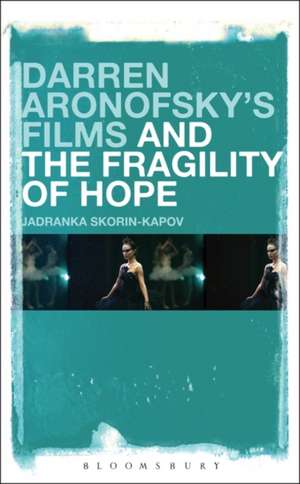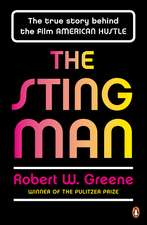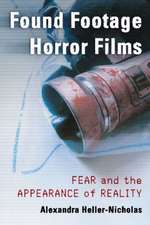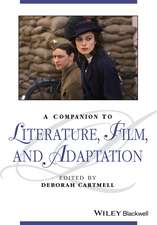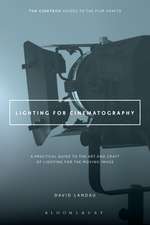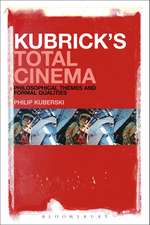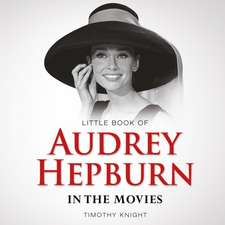Darren Aronofsky’s Films and the Fragility of Hope
Autor Dr. Jadranka Skorin-Kapoven Limba Engleză Paperback – 28 iun 2017
| Toate formatele și edițiile | Preț | Express |
|---|---|---|
| Paperback (1) | 256.12 lei 43-57 zile | |
| Bloomsbury Publishing – 28 iun 2017 | 256.12 lei 43-57 zile | |
| Hardback (1) | 716.24 lei 43-57 zile | |
| Bloomsbury Publishing – 18 noi 2015 | 716.24 lei 43-57 zile |
Preț: 256.12 lei
Preț vechi: 330.47 lei
-22% Nou
Puncte Express: 384
Preț estimativ în valută:
49.01€ • 51.31$ • 40.55£
49.01€ • 51.31$ • 40.55£
Carte tipărită la comandă
Livrare economică 07-21 aprilie
Preluare comenzi: 021 569.72.76
Specificații
ISBN-13: 9781501320156
ISBN-10: 1501320157
Pagini: 216
Ilustrații: 15 bw illus
Dimensiuni: 152 x 229 x 18 mm
Greutate: 0.3 kg
Ediția:NIPPOD
Editura: Bloomsbury Publishing
Colecția Bloomsbury Academic
Locul publicării:New York, United States
ISBN-10: 1501320157
Pagini: 216
Ilustrații: 15 bw illus
Dimensiuni: 152 x 229 x 18 mm
Greutate: 0.3 kg
Ediția:NIPPOD
Editura: Bloomsbury Publishing
Colecția Bloomsbury Academic
Locul publicării:New York, United States
Caracteristici
Highlights the relationship between cinematic art and philosophy in order to understand the human condition
Notă biografică
Jadranka Skorin-Kapov is Professor of Operations Research at Stony Brook University, USA, with a diverse background in mathematics, philosophy, and art history and criticism.
Cuprins
Introduction1. Pi: Is Mathematics "the Language of Nature"?2. Requiem for a Dream: Addiction and Broken Dreams3. The Fountain: Death and the Authenticity of Existence4. The Wrestler: Melodrama and the Gift of Death5. Black Swan: Limit Experience and Artistic Perfection6. Noah: Responsibility, Love, and the Moment of Choice7. Aronofsky's Themes and Auteur's SignatureAppendix: Conversation with AronofskyNotesBibliographyIndex
Recenzii
[A] pioneering product of Aronofsky scholarship ... Skorin-Kapov's book enables readers to connect the films of an important contemporary director to philosophical ideas that shaped the discipline of film studies during the beginnings of the New Hollywood era.
Jadranka Skorin-Kapov reads Aronofsky with philosophical and mathematical rigor and with the warmth of a post-postmodern belief in the power of art to frame and pursue impossible human problems. The analyses in this book reveal a capacious command of film history and philosophical touchstones. Skorin-Kapov's surprising juxtapositions sharpen our glimpse into the utopian potentiality buried in the human obsessions and desires with which Aronofsky's films are preoccupied.
In her book on Darren Aronofsky, Jadranka Skorin-Kapov guides us in an intriguing journey through the variety of human nature as it grows out of his movies, searching for a philosophical sense of life rooted both in the stories and in the physical and mental engagement they imply. While focusing on Aronofsky, Skorin-Kapov shows us how cinema illustrates the metamorphosis of aesthetic experience, from the physical essence of its literal meaning (aesthesis, which has primarily to do with sensation and perception), to the complexity of discernment and reflection. Page after page, film studies, philosophy, and even neuroscience and mathematics converse in a very producing way. This interdisciplinary perspective represents not only the methodology of the book, but also the life story of its author, trained in algorithmic research and then able to move to philosophy, after being stimulated by questions on human condition arisen from her experience of moviegoer.
Jadranka Skorin-Kapov reads Aronofsky with philosophical and mathematical rigor and with the warmth of a post-postmodern belief in the power of art to frame and pursue impossible human problems. The analyses in this book reveal a capacious command of film history and philosophical touchstones. Skorin-Kapov's surprising juxtapositions sharpen our glimpse into the utopian potentiality buried in the human obsessions and desires with which Aronofsky's films are preoccupied.
In her book on Darren Aronofsky, Jadranka Skorin-Kapov guides us in an intriguing journey through the variety of human nature as it grows out of his movies, searching for a philosophical sense of life rooted both in the stories and in the physical and mental engagement they imply. While focusing on Aronofsky, Skorin-Kapov shows us how cinema illustrates the metamorphosis of aesthetic experience, from the physical essence of its literal meaning (aesthesis, which has primarily to do with sensation and perception), to the complexity of discernment and reflection. Page after page, film studies, philosophy, and even neuroscience and mathematics converse in a very producing way. This interdisciplinary perspective represents not only the methodology of the book, but also the life story of its author, trained in algorithmic research and then able to move to philosophy, after being stimulated by questions on human condition arisen from her experience of moviegoer.
